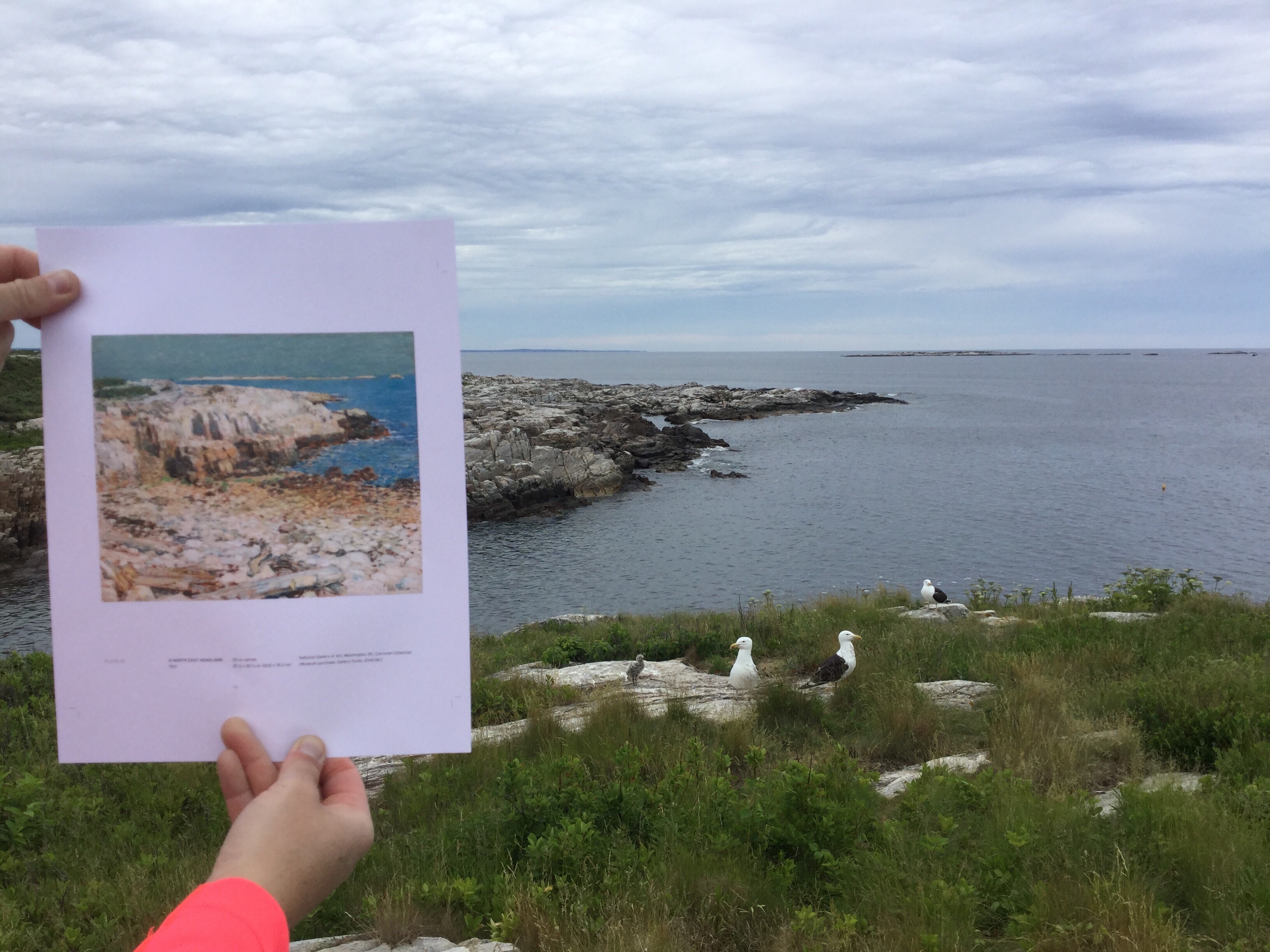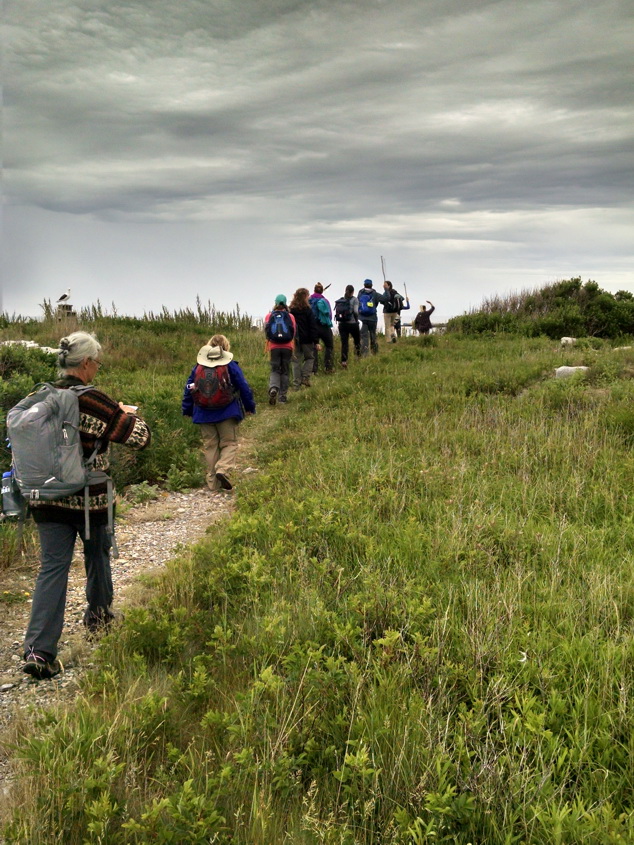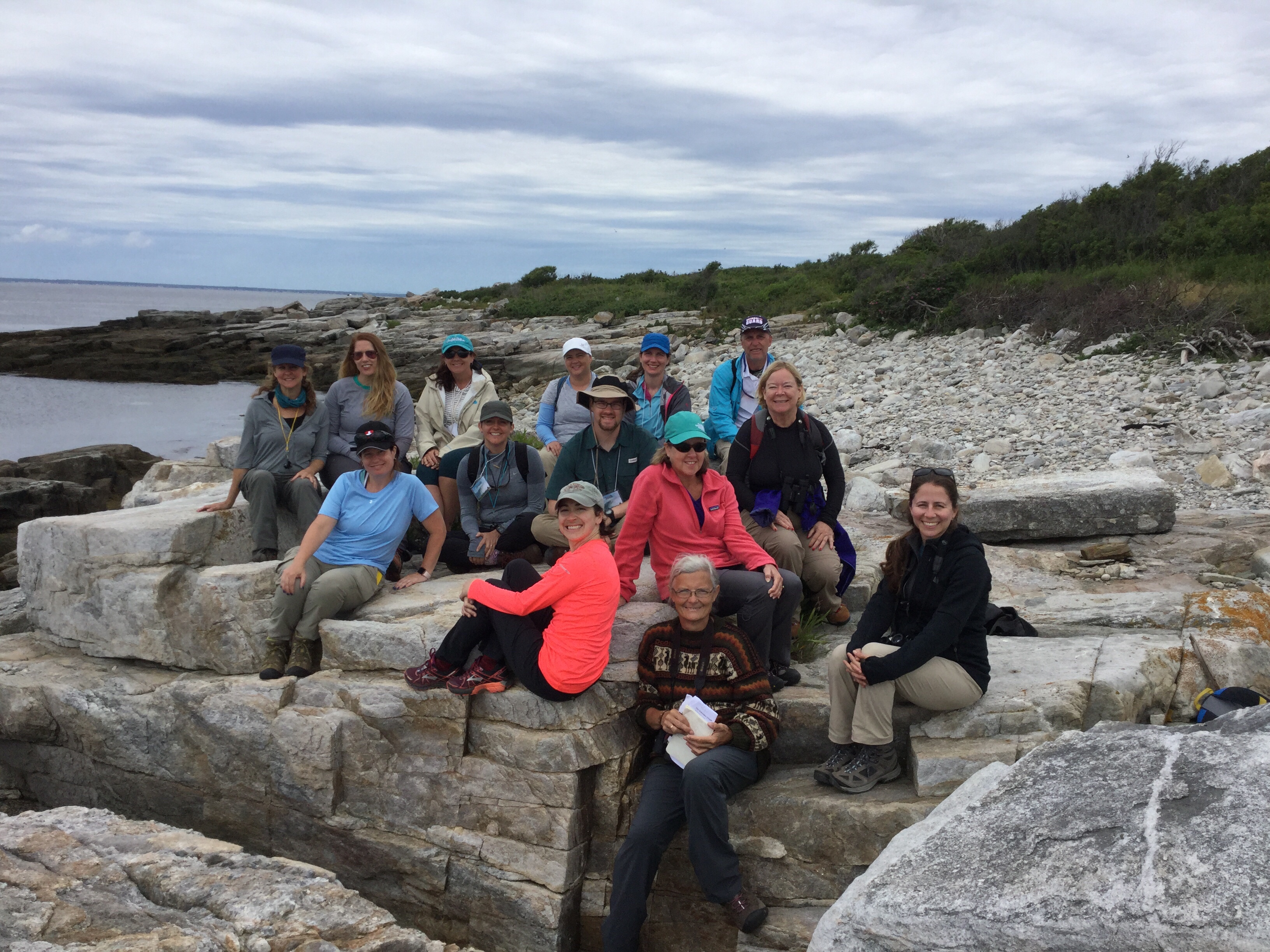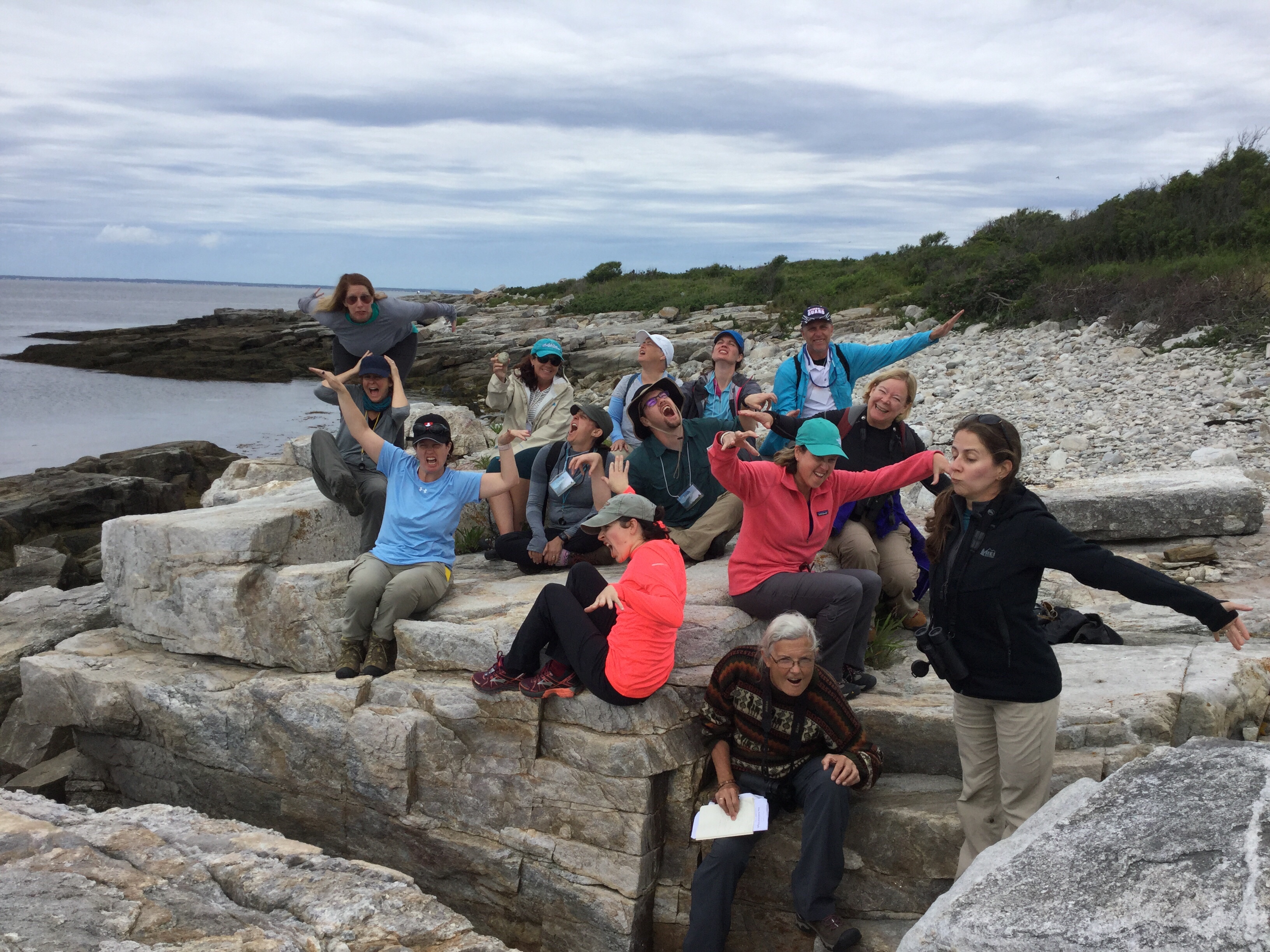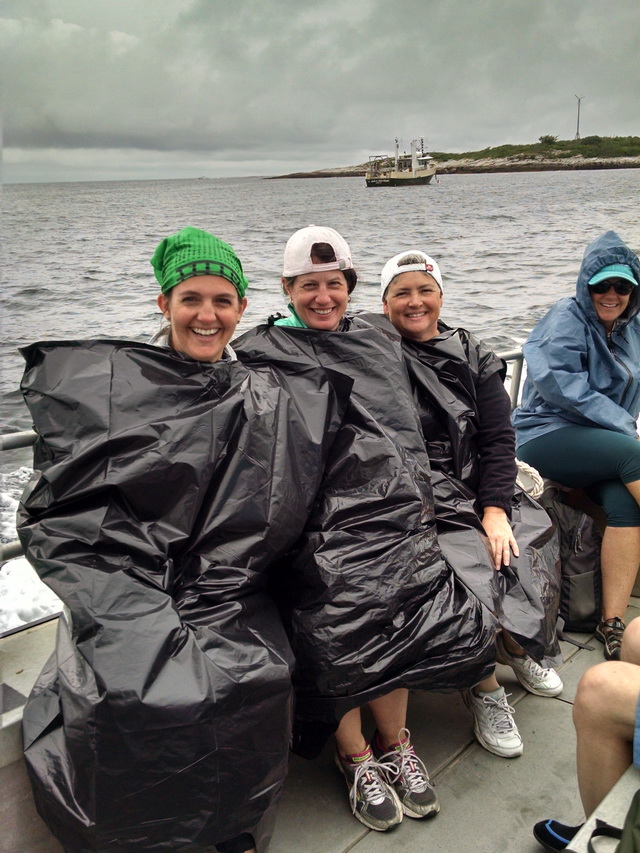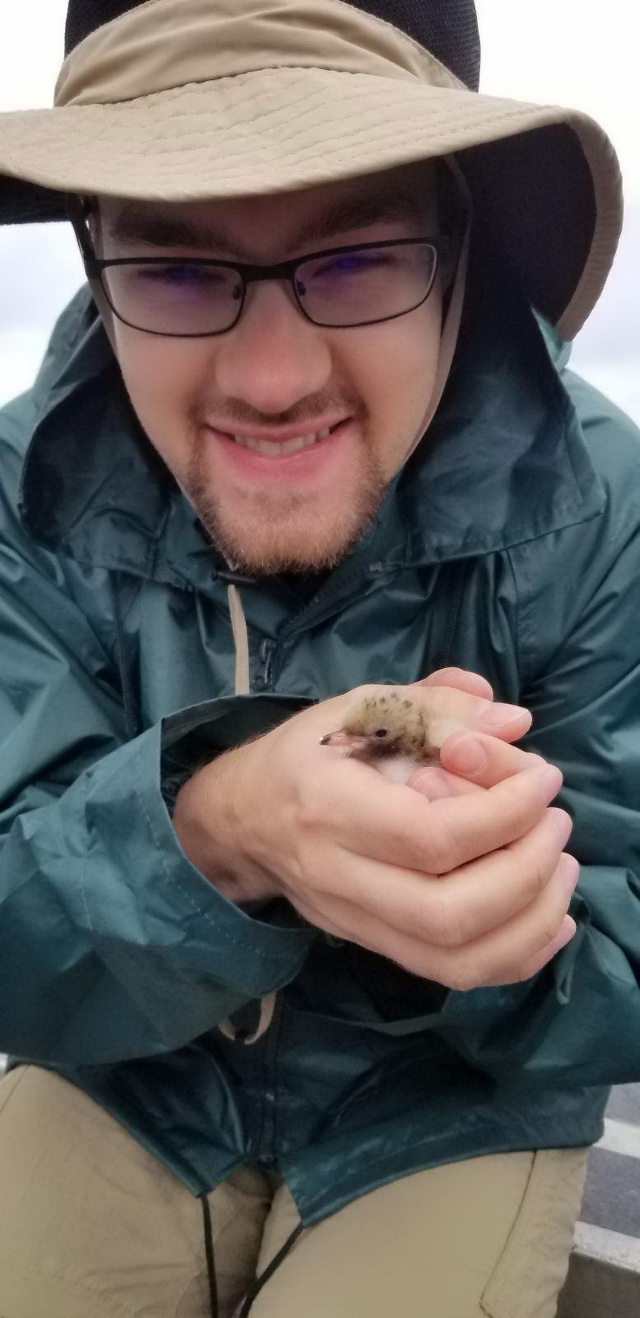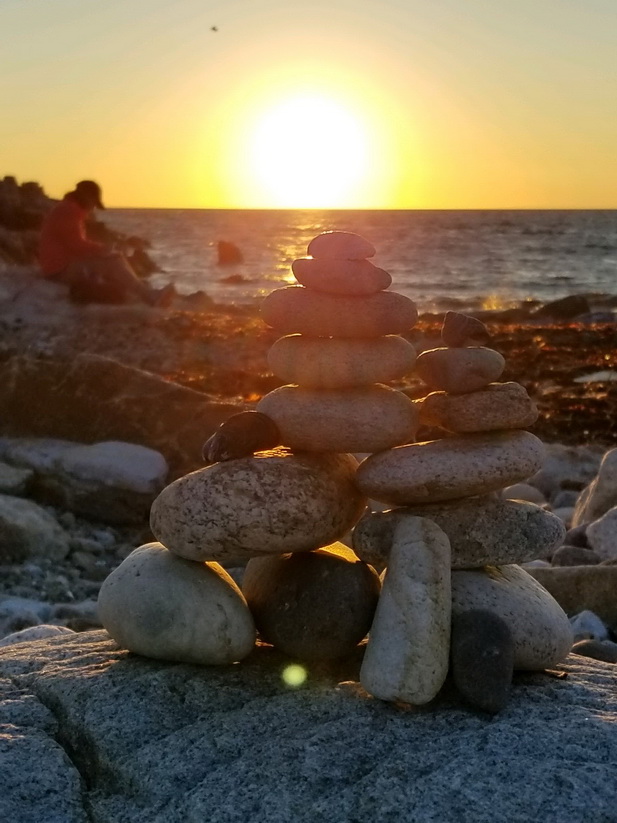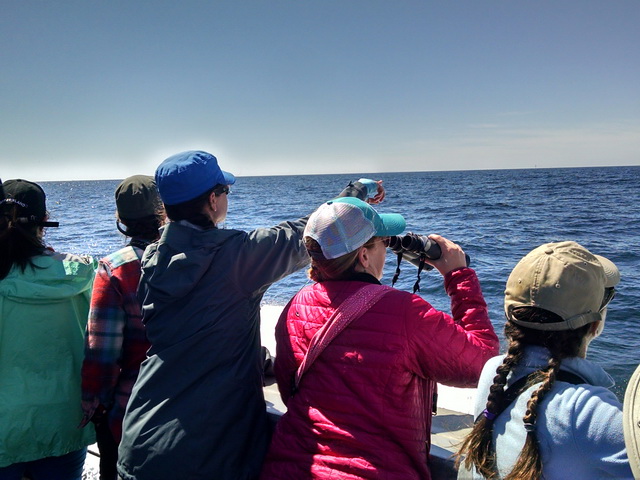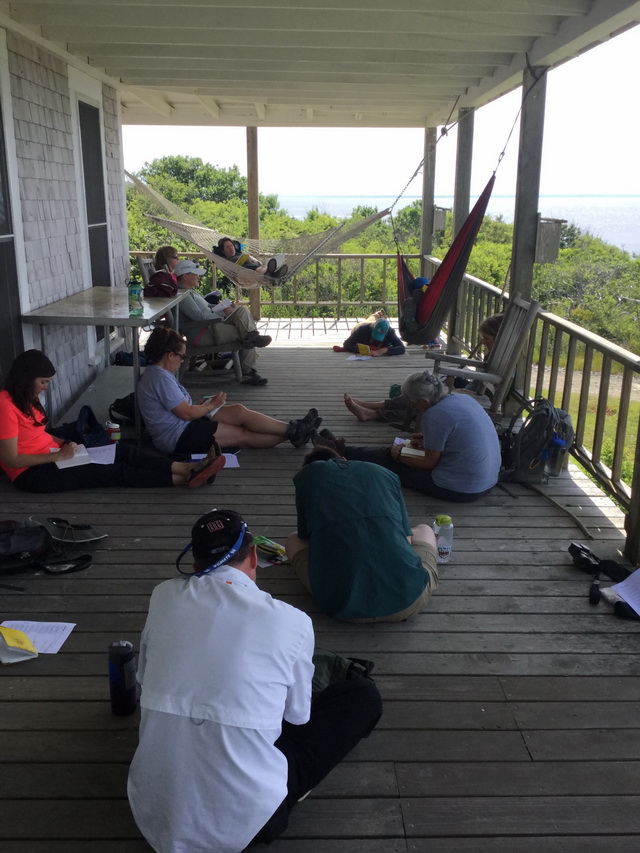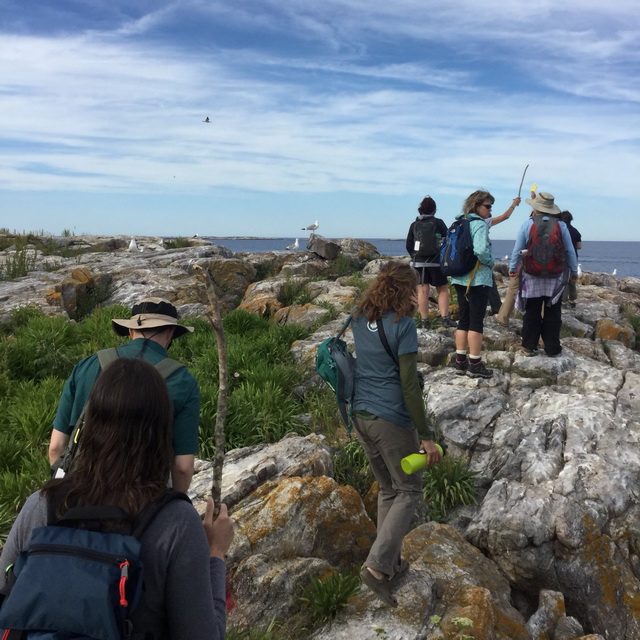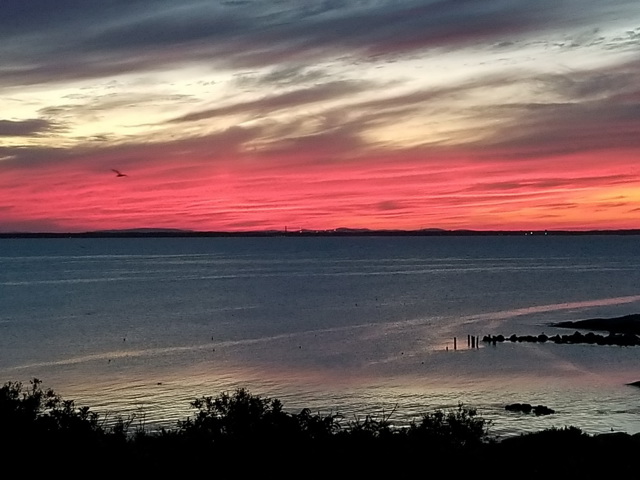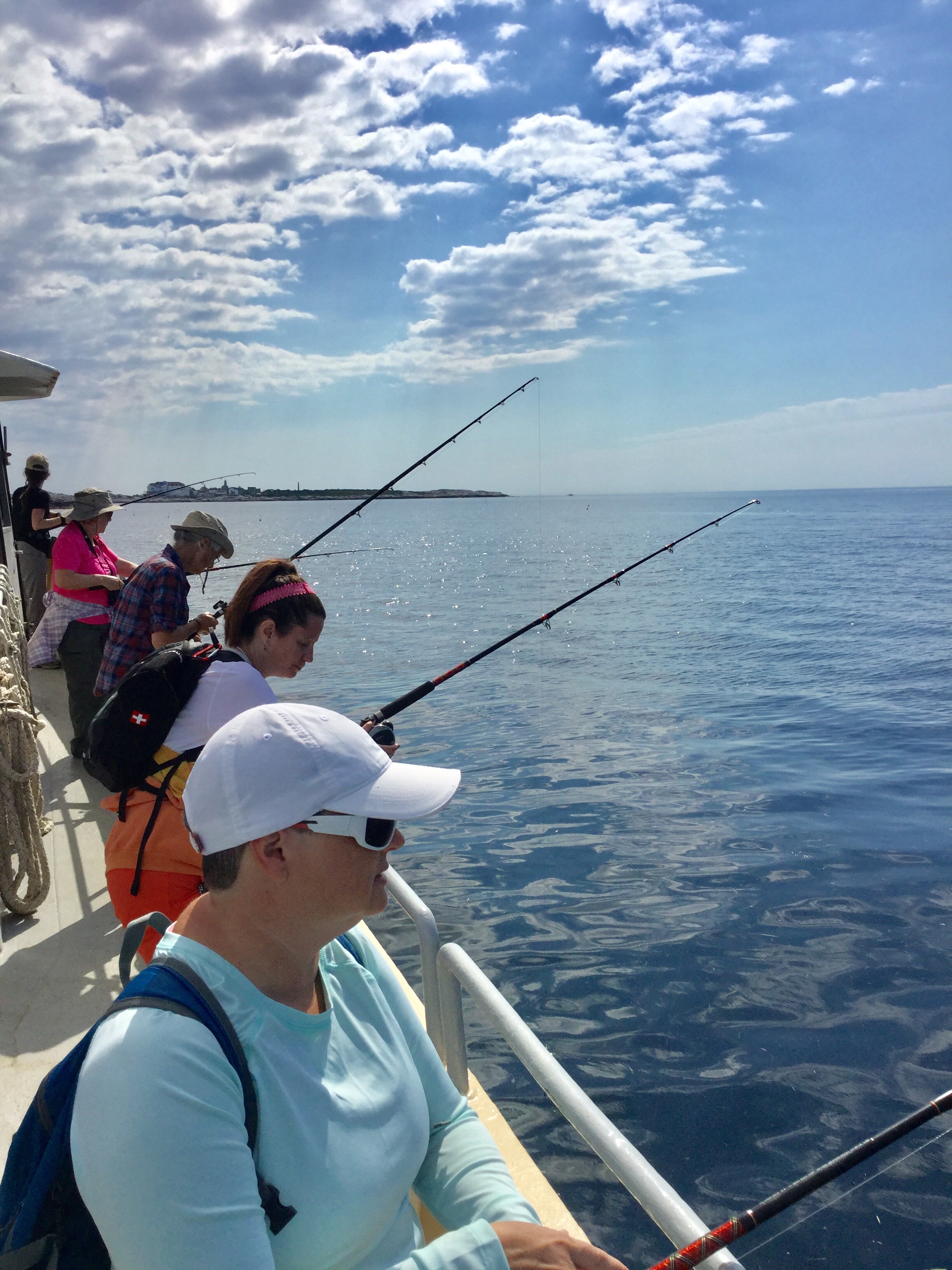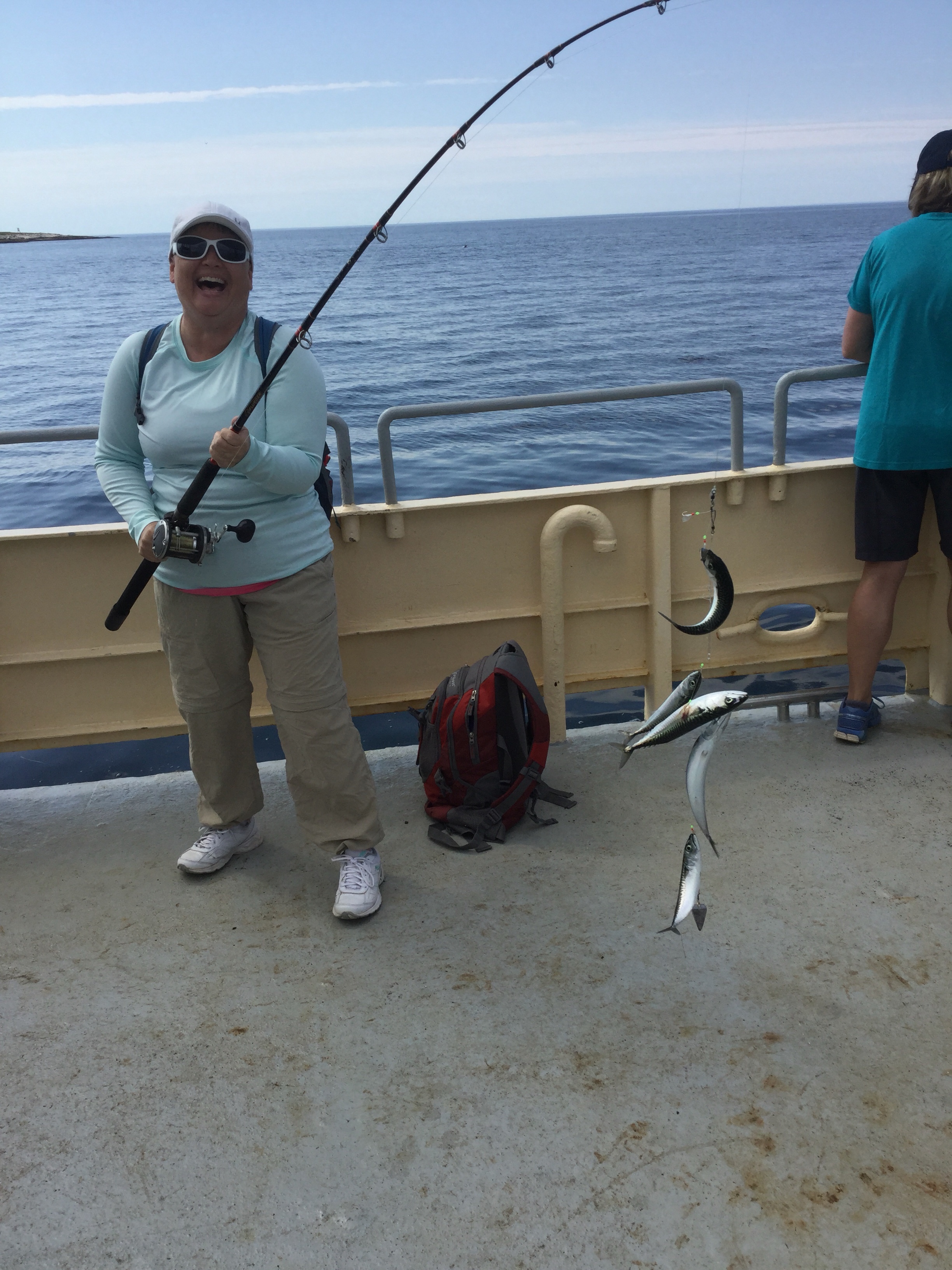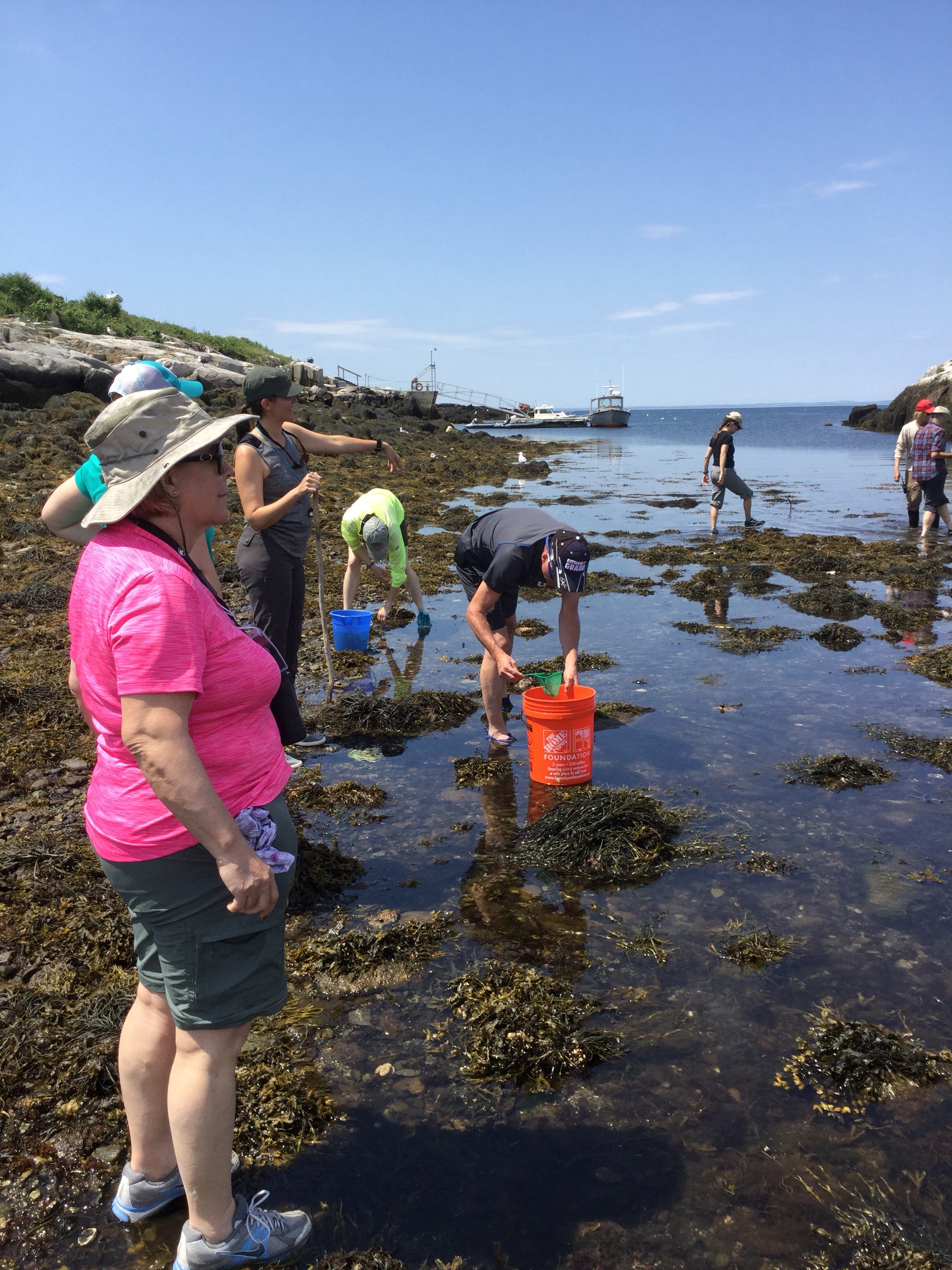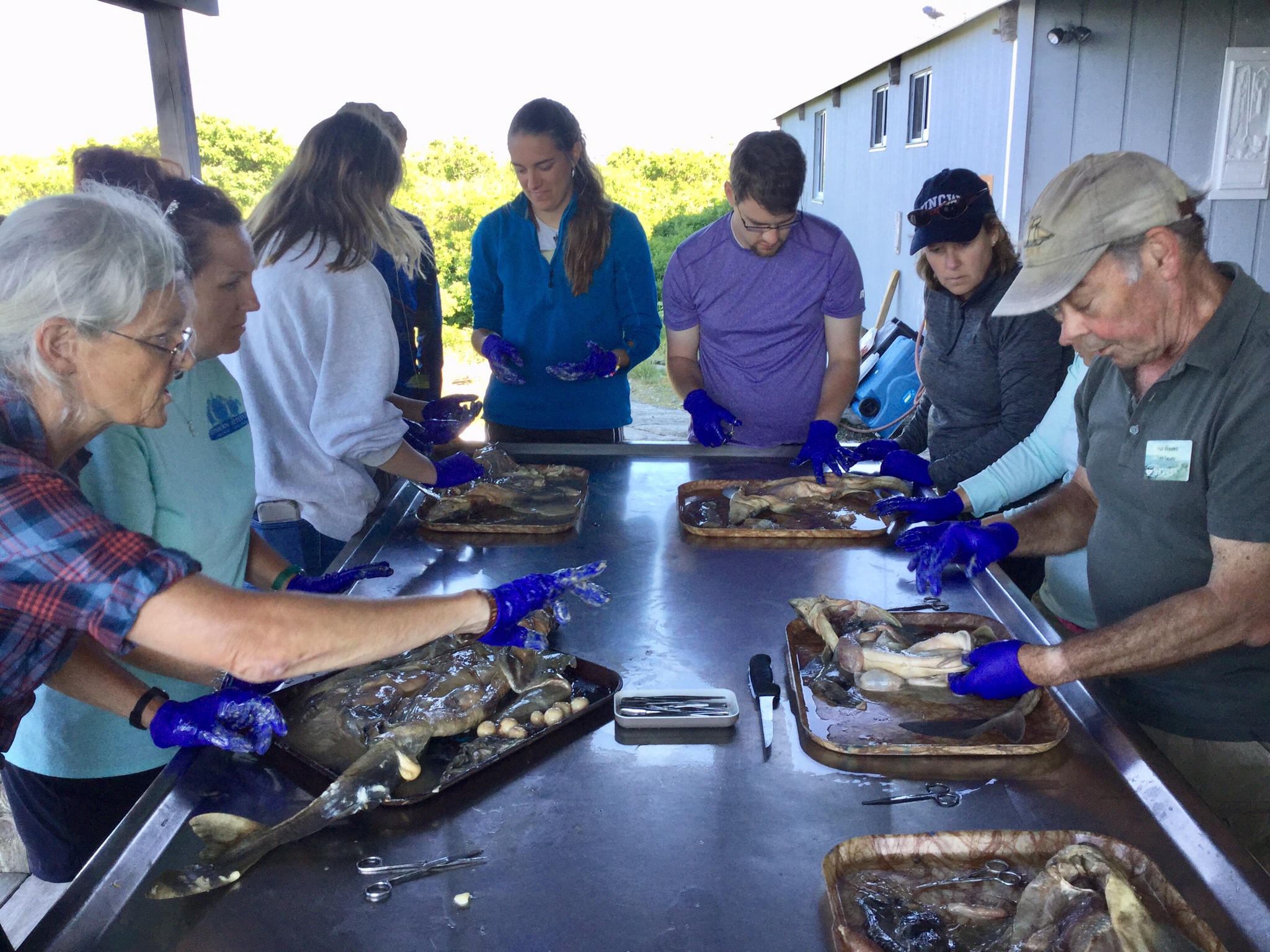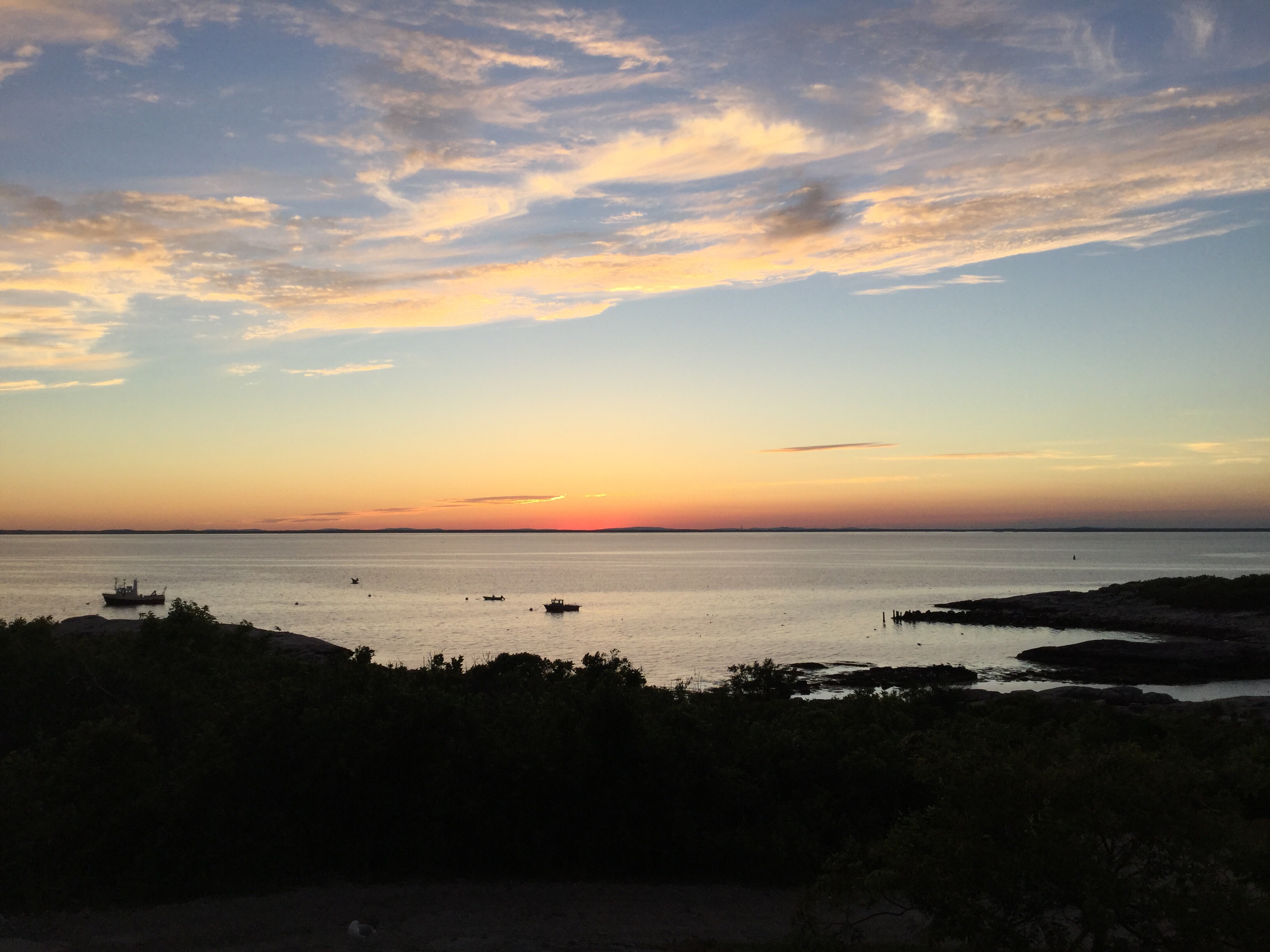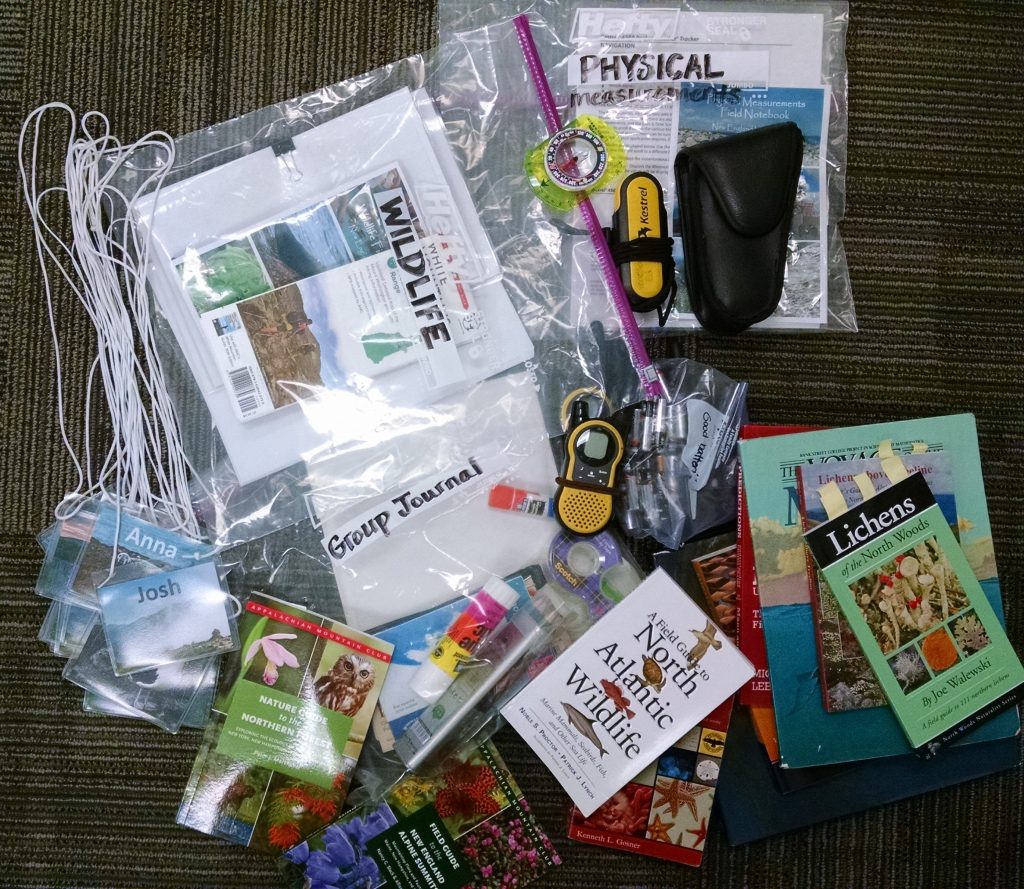“Lobster Rolls and Momma Moose make our day”
June 24, 2018 - 2 Comments
The morning was cool and cloudy but warmed up nicely to reveal blue skies. It is our final day on Appledore island. Nature can be calming and nature can be cruel. I think some of us are leaving with the sense that we are glad not to have been born a seagull. The nesting colony of gulls here face numerous hardships, but also enjoy unlimited beauty. Blair witnessed a vicious gull attack where one herring gull attacked another, presumably to dine on its one and only chick. A battle ensued and gulls were tossing and flopping about, with locked beaks and making perilous sounds. The battle ended in successful defense by the parent of the one chick. Whew!
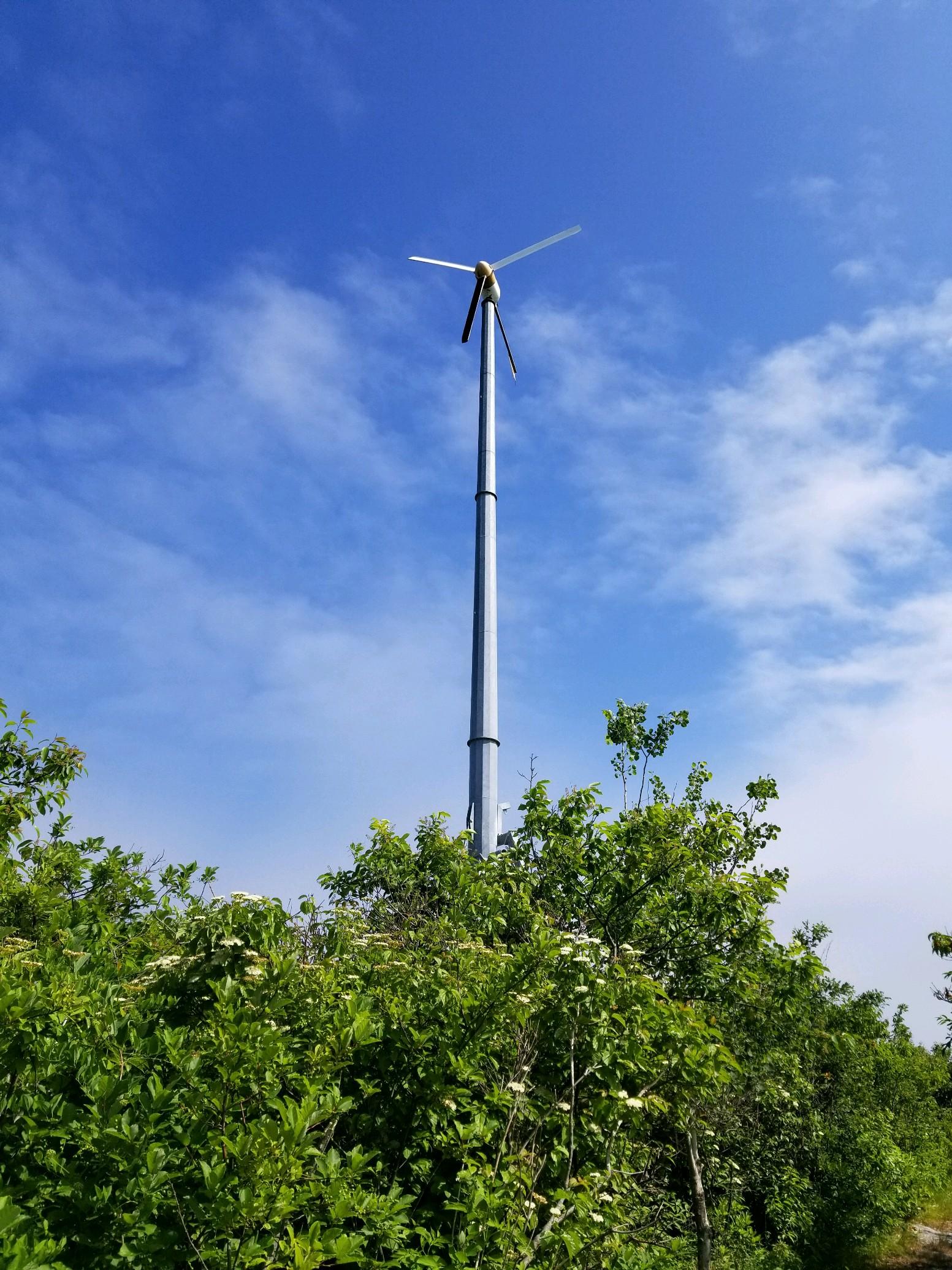
The wind turbine that helps generate some electricity for the island. Not pictured are the many (gull poop covered) solar panel arrays that generate the bulk of the power for the island.
We finished our time on the island with two tours. Our first one highlighted the sustainability features of toilets, electricity generation, water usage, and hot water generation. Over the years, Shoals Marine Lab has been installing solar panels, a wind turbine, rain water catchment systems, and composting toilets to conserve valuable resources in a remote location. The rain water can currently only be used for watering Celia Thaxter’s historic garden because the rooftops are covered in gull droppings. Celia Thaxter was the daughter of the owner of the once-grand Appledore hotel, and she hosted many different artists in her home, including Childe Hassam. Shoals Marine Lab keeps the garden up to preserve a part of the island’s hotel-era history (which ended abruptly in 1914 with a devastating fire). Though people can’t drink the rainwater captured from the rooftops, Celia’s garden has benefited from these additional nutrients and the flowers were spectacular.
“The earth laughs in flowers.” ~Ralph Waldo Emerson
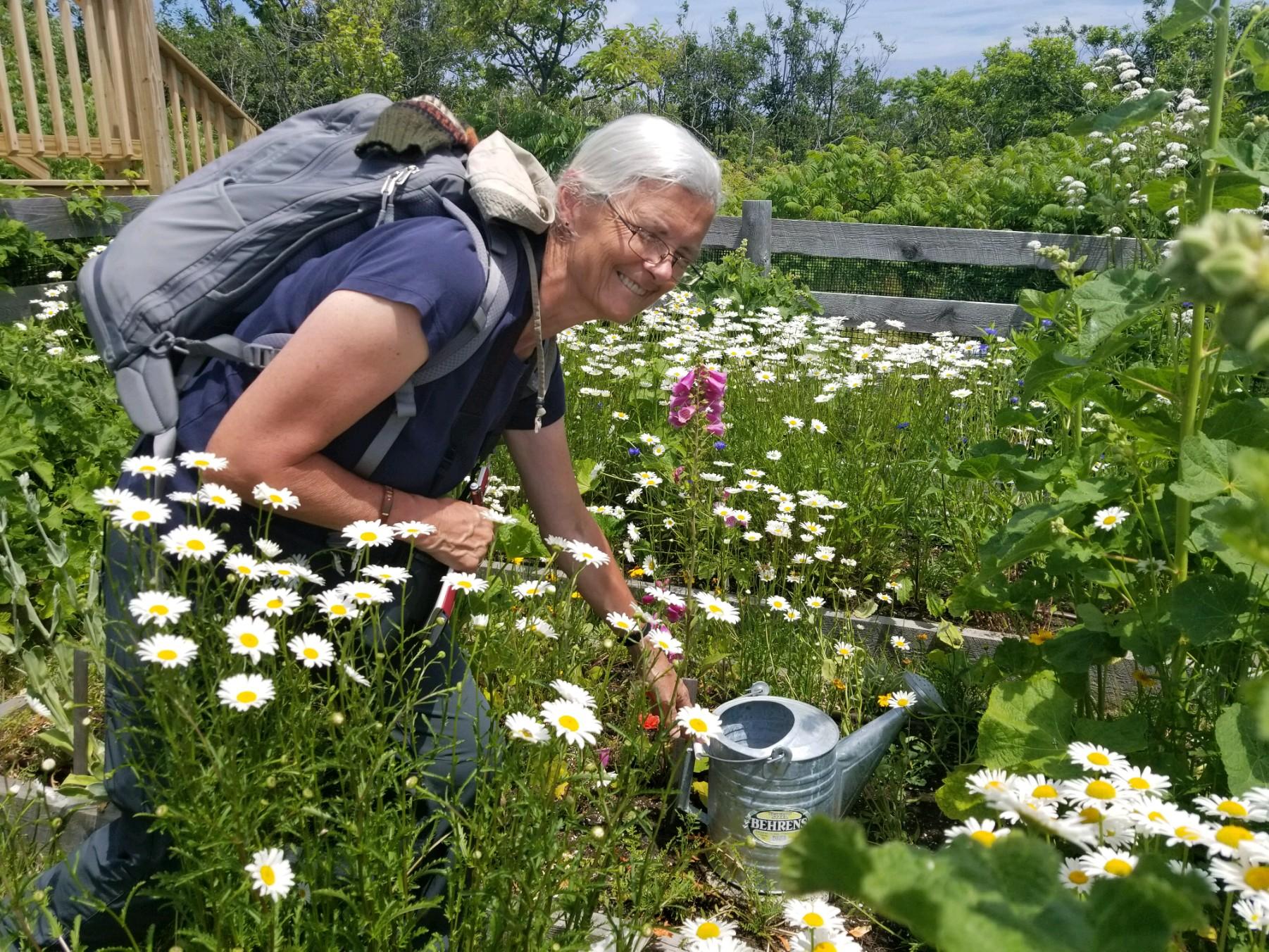
Frances channeling the spirit of Celia Thaxter in her garden. Photo: Renee Pagoota-Wight.
Once on land (and back in New Hampshire), we quickly descended upon Sanders Fish Market for quintessential lobster rolls. Everyone ate with vigor and we continued our journey north to Joe Dodge Lodge (at AMC Pinkham Notch Visitor Center). Sadly the only wildlife we spotted along the drive were two roadkill porcupines, and one (fortunately) live red fox. We cannot wait for “luxurious” rooms and showers (which were limited on the island to conserve water).
And then, as we were closing our day on a quiet wetland boardwalk near the lodge, our meeting was interrupted in the best possible way — when a momma moose and her yearling calf decided to join us at the pond! (OMG!!!!!!) Our unexpected visitors left us thrilled and excited to see what other surprises these new terrestrial and alpine environments hold for us over the next few days!
*Note: We may not be able to post blogs again until we get off the trail again on Wednesday.

